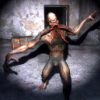What kills projects?
I'm the art end on game development. So far I have been keeping it mostly in the 2d realm but I'm actually getting into blender (cause it's free)
I it has been my experience that a dev. group can die easily, and mostly it's been issues with either programmers and writers loosing interest or some technical problem or interpersonal disconnect between the more creative sector and the more logical one.
Being relatively new to 'searching out other talented people online' I wanted to pose a few questions to the programmers out there:
- What usually kills your projects?
- Would you be more willing to commit to a project if the main body of the art was already done?
- Would you be more willing to commit to a project if a well written design specifications document was written out with control, interface and general design already written out with any variation decided upon on or near the outset of the project?
- Does file-type for sprites (.tif, .png, etc.) make any significant difference to the end product or the difficulty programming it?
- Do semi or partially transparent pixels in sprites(I use photo-shop and prefer the look of the brush (at about 800X600) tool to the pencil tool) create any headaches for programmers? (I'm currently thinking of a project akin to OdinSphere)
- Is there anything you want artists to know at the outset of a project or problems you typically run into you would be wary of?
- If I wanted really atmospheric discoloration in my characters, relative to their environment, would it create problems for the programmer?
(that last one is really project specific, hehe)
Reason #1: Project management by someone who has never managed a project.
Reason #2: Project management by someone who has never even seen a real commercial project managed.
Reason #3: They're freaking volunteers.
One of the common mistakes is to try and set everybody on a project as equals, which is an unworkable setup. Some people have the insight to assign leads, but then fail to find people who will actually defer to a lead on a project that's not paying them.
Also, if people are consistently fighting the art or tech leads, that's a very bad sign. In a company, you have to defer to the lead eventually, or you'll be fired. But that type of insurrection will wreck a volunteer project. And if a project manager won't fire someone causing problems, that's a warning sign too.
Reason #2: Project management by someone who has never even seen a real commercial project managed.
Reason #3: They're freaking volunteers.
One of the common mistakes is to try and set everybody on a project as equals, which is an unworkable setup. Some people have the insight to assign leads, but then fail to find people who will actually defer to a lead on a project that's not paying them.
Quote: Would you be more willing to commit to a project if the main body of the art was already done?The "main body" of the art is done when the game is almost done. Artists tend to have perfectionist obsessions, and some project leads unfortunately encourage that. When the game is being built, we don't need a glorious minimal poly textured whatever. We need something roughly correct that can be used to prototype the game as well as the art direction. And since the art direction tends to evolve somewhat, trying to get it right early is a waste of time.
Quote: Would you be more willing to commit to a project if a well written design specifications document was written out with control, interface and general design already written out with any variation decided upon on or near the outset of the project?I wouldn't consider involving myself in a game project that didn't have those things.
Quote: Does file-type for sprites (.tif, .png, etc.) make any significant difference to the end product or the difficulty programming it?Those are engineering problems specific to the project. Check with your programmers, and possibly the art director.
Do semi or partially transparent pixels in sprites(I use photo-shop and prefer the look of the brush (at about 800X600) tool to the pencil tool) create any headaches for programmers? (I'm currently thinking of a project akin to OdinSphere)
If I wanted really atmospheric discoloration in my characters, relative to their environment, would it create problems for the programmer?
Quote: Is there anything you want artists to know at the outset of a project or problems you typically run into you would be wary of?If you're working with programmers who are not able to lay down approximate tech limitations early on, or seem to be waffling about basic decisions about where to draw the line, get out. If engineering can't tell you what your boundaries are, they don't know what they're doing. This includes questions like the ones you asked above about transparent pixels.
Also, if people are consistently fighting the art or tech leads, that's a very bad sign. In a company, you have to defer to the lead eventually, or you'll be fired. But that type of insurrection will wreck a volunteer project. And if a project manager won't fire someone causing problems, that's a warning sign too.
SlimDX | Ventspace Blog | Twitter | Diverse teams make better games. I am currently hiring capable C++ engine developers in Baltimore, MD.
Never had a project die, but:
Nah just needs to be consistent or whatever the programmer wants. PNG most likely since it's a nice format and the libraries for it are abundant.
Most of this you can figure out by talking to the person you're working with.
Oh yeah and scale is really important whether in 2D or 3D. Toy around and have the programmer render a few models and mess around with scale. Modeling rooms myself I often found I made things a little too small. This was especially true for the height of the buildings. It's a good idea to experiment that stuff.
// Since promit replied:
[Edited by - Sirisian on July 20, 2009 12:41:03 PM]
Quote: Original post by SethmonsterI'm a programmer so I'd be more worried about the code. I've created models for someone's game before and a few assets, and I ended up giving the person goals like "If you code shadows I'll give you the bridge model" and then tease him pictures. I was just helping for fun and wanted to see my models put to use.
- Would you be more willing to commit to a project if the main body of the art was already done?
Quote: Original post by Sethmonster
- Does file-type for sprites (.tif, .png, etc.) make any significant difference to the end product or the difficulty programming it?
Nah just needs to be consistent or whatever the programmer wants. PNG most likely since it's a nice format and the libraries for it are abundant.
Quote: Original post by Sethmonsteralpha transparency is a well understood concept for programmers normally. Alpha blending on the GPU and rendering 2D textures is pretty trivial. In 3D transparency is a bigger problem.
- Do semi or partially transparent pixels in sprites(I use photo-shop and prefer the look of the brush (at about 800X600) tool to the pencil tool) create any headaches for programmers? (I'm currently thinking of a project akin to OdinSphere)
Quote: Original post by SethmonsterMake sure you have a target poly count. Design models with collision geometry in mind if you have to add in collision boundaries manually.
- Is there anything you want artists to know at the outset of a project or problems you typically run into you would be wary of?
Most of this you can figure out by talking to the person you're working with.
Quote: Original post by SethmonsterHey... be careful with wording. "More creative sector". :P Programming can be rather creative.
I it has been my experience that a dev. group can die easily, and mostly it's been issues with either programmers and writers loosing interest or some technical problem or interpersonal disconnect between the more creative sector and the more logical one.
Oh yeah and scale is really important whether in 2D or 3D. Toy around and have the programmer render a few models and mess around with scale. Modeling rooms myself I often found I made things a little too small. This was especially true for the height of the buildings. It's a good idea to experiment that stuff.
// Since promit replied:
Quote: Original post by PromitSo true. When I first started modeling (I'm still a beginner) I kept making mistakes. Flesh out large buildings and rooms and stairs with blocky low poly objects. Move onto the next model etc and repeat. You'll get more done and you'll get quicker feedback about obvious problems so you don't have to go back. That probably doesn't stop at just architectural stuff. When I do 2D pixel art for my small project I create filled polygons of the general shape of the textures so I can get a feel for how everything works out. I'd ask the programmer if they want those rather than real textures for testing. They're also much faster to make.Quote: Would you be more willing to commit to a project if the main body of the art was already done?The "main body" of the art is done when the game is almost done. Artists tend to have perfectionist obsessions, and some project leads unfortunately encourage that. When the game is being built, we don't need a glorious minimal poly textured whatever. We need something roughly correct that can be used to prototype the game as well as the art direction. And since the art direction tends to evolve somewhat, trying to get it right early is a waste of time.
[Edited by - Sirisian on July 20, 2009 12:41:03 PM]
When I've been browsing help wanted the absolute biggest turn off has been all the project leaders that want to make a commercial game but haven't even thought about marketing, publishers or acquiring console dev kits. So none of this "work for free now and if the game makes money I'll give you some maybe I guess", either make your project freeware or have a real business plan.
Quote: Original post by Sirisian
Never had a project die, but:Quote: Original post by SethmonsterI'm a programmer so I'd be more worried about the code. I've created models for someone's game before and a few assets, and I ended up giving the person goals like "If you code shadows I'll give you the bridge model" and then tease him pictures. I was just helping for fun and wanted to see my models put to use.
- Would you be more willing to commit to a project if the main body of the art was already done?
Hmm, this sounds familiar. Oh yeah it was me...
I never did get those shadows working in the end... This is why my own strategy is to have a working prototype that uses programmer art and then, before releasing the beta, comissioning genuine art. Your offer to work on art was generous but the game really wasn't ready for it.
My advice is to use shitty free models off turbosquid etc and then replace them later. Need animated 3d models for your characters? the Cal3D demos come with a skeleton, a paladin, and a woman in her underwear. Those are all you really need. (and to be honest, some AAA games are no more imaginative)
Don't thank me, thank the moon's gravitation pull! Post in My Journal and help me to not procrastinate!
I have been in a few failed project myself, and the truth is (from my experience) people have a really hard time working on the game once the first wave of excitement rolls over.
It's like a few sketches, words thrown around, and a map editor gets everyone initially excited, but as this excitement wears off so does the work.
I think it's best to join a team who seems to be motivated in a healthy sense. I think too much initial excitement usually means the team is inexperienced.
With my current game I plan on finishing the entire thing using placeholder art. When I try to recruit artists I will have the entire game playable. This will hopefully draw attention from the right people.
It's like a few sketches, words thrown around, and a map editor gets everyone initially excited, but as this excitement wears off so does the work.
I think it's best to join a team who seems to be motivated in a healthy sense. I think too much initial excitement usually means the team is inexperienced.
With my current game I plan on finishing the entire thing using placeholder art. When I try to recruit artists I will have the entire game playable. This will hopefully draw attention from the right people.
Wait, volunteer artists actually exist?
I've never seen an artist post in Help Wanted, except for concept art for MMOs. Every programmer seems to struggle to find artists.
I've never seen an artist post in Help Wanted, except for concept art for MMOs. Every programmer seems to struggle to find artists.
Quote: Original post by Scet
Wait, volunteer artists actually exist?
I've never seen an artist post in Help Wanted, except for concept art for MMOs. Every programmer seems to struggle to find artists.
Volunteer artists certainly exist. I used to be one, until I got good enough to sell my work. But volunteer professional-quality artists do not exist. And in general artists and writers struggle just as much to find programmers as programmers do to find artists.
My take on it is that besides the volunteer issue, the fundamental problem is that everybody has a different idea of what kind of game they want to make and no real ability to compromise and come to an agreement about what they want. (also applies to a writer and artist teaming up to make a comic, or two writers teaming up to co-write) Nothing is more demotivational than being asked to work on a project you think is ruining a good opportunity or going the wrong direction.
Being a designer myself, the only way I personally would consider joining a project as a volunteer artist is if the project began in the design stage and I was the art director and co-designer, with the other designer being the lead programmer.
[Edited by - sunandshadow on July 20, 2009 5:31:02 PM]
I want to help design a "sandpark" MMO. Optional interactive story with quests and deeply characterized NPCs, plus sandbox elements like player-craftable housing and lots of other crafting. If you are starting a design of this type, please PM me. I also love pet-breeding games.
Quote: Original post by Scet
Wait, volunteer artists actually exist?
I've never seen an artist post in Help Wanted, except for concept art for MMOs. Every programmer seems to struggle to find artists.
lol .... I'm with you on this one. Where the heck are THOSE guys at? Hell, I don't even need refined models, just enough for a proof-of-concept.
Volunteer artists tend to be 2D artists because 2D art is what is taught in middle school and high school.
I want to help design a "sandpark" MMO. Optional interactive story with quests and deeply characterized NPCs, plus sandbox elements like player-craftable housing and lots of other crafting. If you are starting a design of this type, please PM me. I also love pet-breeding games.
This topic is closed to new replies.
Advertisement
Popular Topics
Advertisement









